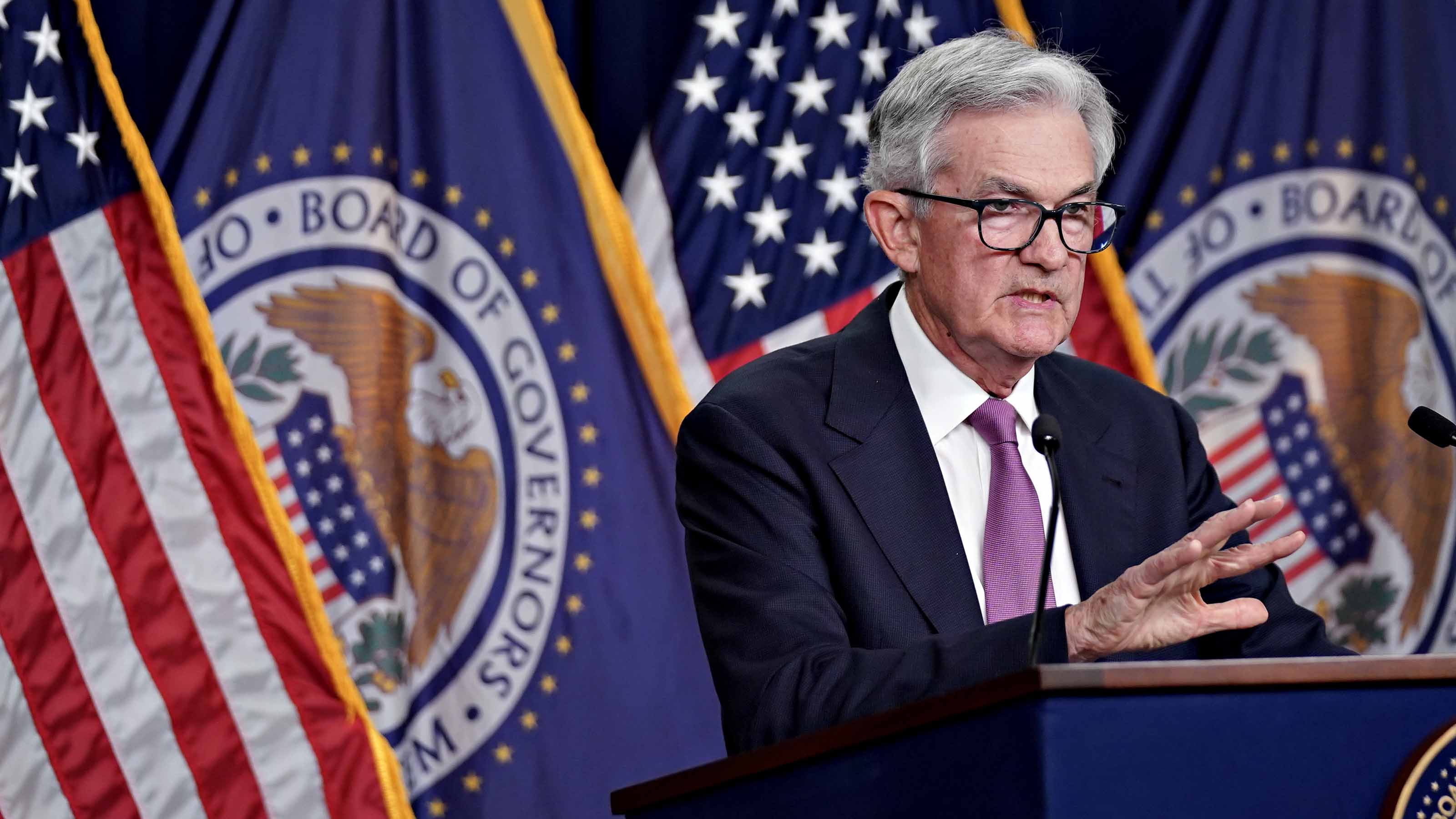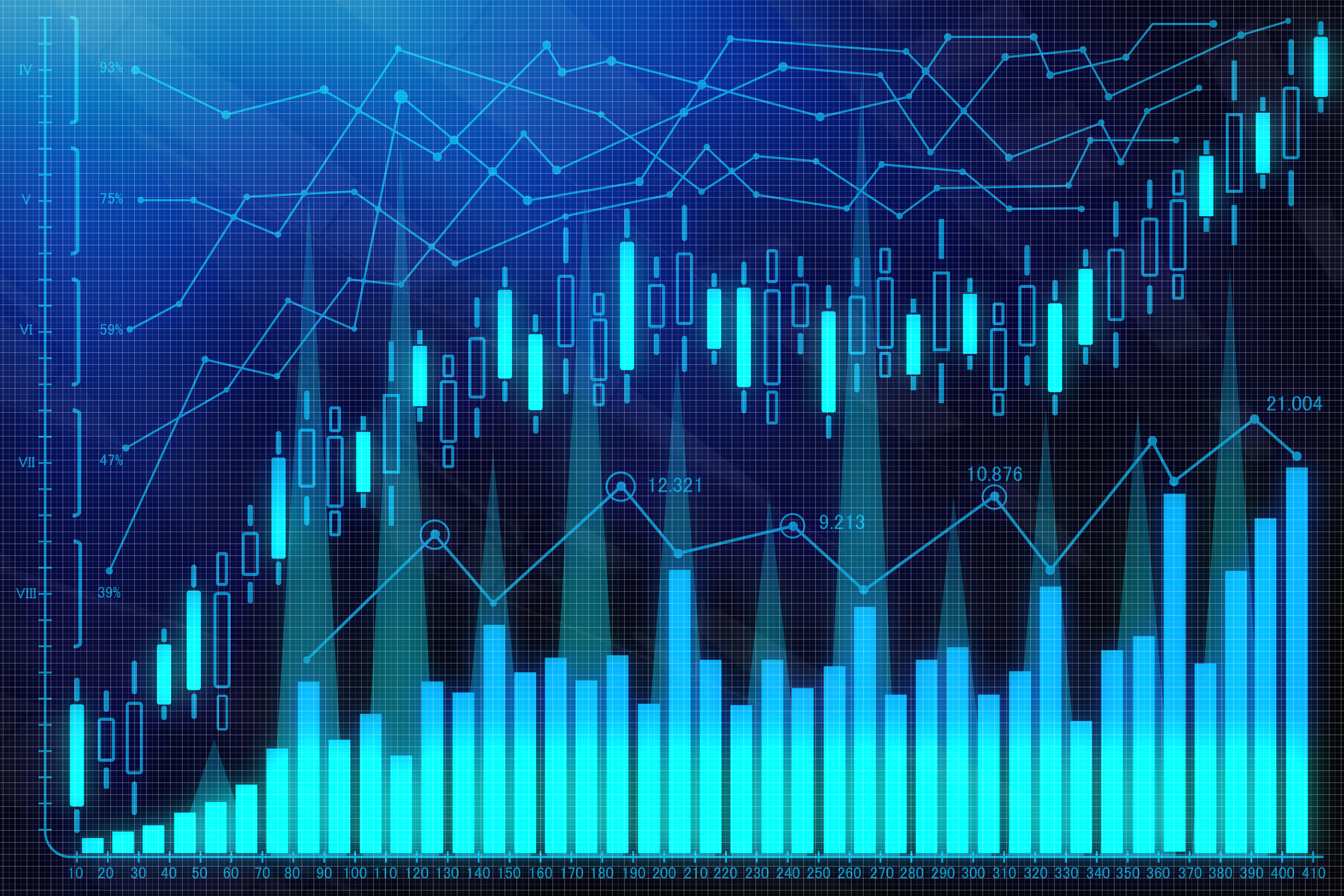Stock Market Today: Stocks Swing After Fed Signals More Rate Hikes
The Fed stood pat on interest rates this time around but the central bank's hawkish outlook made for a volatile afternoon.


Stocks spent the day mostly higher in the lead up to this afternoon's policy announcement from the Federal Reserve. However, the major indexes swung lower after the central bank, as expected, held interest rates steady, but forecast more rate hikes to come.
Price action ultimately stabilized into the close, though one major index woefully underperformed its peers.
Today's pause by the Fed left the short-term federal funds rate at a range of 5.00% to 5.25%. However, the committee raised the median year-end target rate to 5.6% from 5.1%, implying two more quarter-point rate hikes by the end of 2023. The central bank said in its statement that "recent indicators suggest economic activity has continued to expand at a modest pace," and keeping rates unchanged allows it "to assess additional information and its implications for monetary policy."
From just $107.88 $24.99 for Kiplinger Personal Finance
Become a smarter, better informed investor. Subscribe from just $107.88 $24.99, plus get up to 4 Special Issues

Sign up for Kiplinger’s Free Newsletters
Profit and prosper with the best of expert advice on investing, taxes, retirement, personal finance and more - straight to your e-mail.
Profit and prosper with the best of expert advice - straight to your e-mail.
The projections for an increase in the 2023 fed funds target is not set in stone, Fed Chair Jerome Powell said in his subsequent presser, adding that the central bank will make its future decisions based on data. "We remain committed to bringing inflation down," Powell said, which will require "a period of below-trend growth."
More signs inflation is easing
As for the data the Federal Reserve is watching, "the latest inflation prints showed a further easing in price pressures, most notably at the headline level," says Phillip Colmar, partner and global strategist of MRB Partners. This, he adds, "provided some flexibility for the Fed to take a breather at today's meeting."
Indeed, this morning's producer price index (PPI), which measures what businesses are charging suppliers for goods, painted a similar picture to yesterday's consumer price index (CPI). Specifically, the Bureau of Labor Statistics said earlier that its PPI fell 0.3% month-over-month in May, while core PPI, which excludes volatile food and energy prices, was unchanged. Both figures were improvements over the increases seen in April.
Investors shouldn't get too excited, however, considering that most of the decline in the headline PPI reading came amid a big drop in gasoline and diesel prices, says Bill Adams, chief economist for Comerica Bank. Still, the fact that producer prices are indeed cooling is encouraging. "The faster inflation comes down, the earlier the Fed can take their foot off the brake, and the sooner economic growth can pick up again," Adams says.
Following today's policy statement – and Powell's expectations that July will be a "live" meeting – interest rate traders assign a 64.5% probability of a rate hike at the next Fed meeting, up from 50% one week ago.
As for the major indexes, the Nasdaq Composite was down nearly 0.8% in the aftermath of the Fed announcement before ending with a 0.4% gain at 13,626. The S&P 500 rose 0.1% to 4,372.
The Dow Jones Industrial Average, meanwhile, spent the entire session lower on weakness in UnitedHealth Group (UNH), eventually finishing off 0.7% at 33,979. UNH slumped 6.4% after the health insurer said seniors are catching up on pandemic-delayed procedures, which is increasing costs for the company. At more than $460 a share, UNH has the greatest weighting of the 30 stocks in the price-weighted Dow.
Why you should avoid penny stocks
We tend to focus on long-term buy-and-hold investments at Kiplinger.com, like the kind found in stable blue chip stocks or the best dividend stocks. We do understand that some market participants like to play riskier corners of the market. So, every once in a while, we will offer up picks for the best cheap stocks to buy, while adding the caveat that these plays tend to be more volatile than their higher-priced counterparts.
However, what we never offer up are recommendations for penny stocks, or those equity securities that typically cost less than a dollar and trade over-the-counter (OTC). Why? Because they're "dangerous," explains Dan Burrows, senior investing writer at Kiplinger.com, in his feature "Penny Stocks: Why You Should Always Stay Away." Sure, there are a few quality names that trade OTC – mostly larger international stocks – but market participants should generally steer clear of these super-cheap, extremely volatile stocks.
Related Content
Profit and prosper with the best of Kiplinger's advice on investing, taxes, retirement, personal finance and much more. Delivered daily. Enter your email in the box and click Sign Me Up.

With over a decade of experience writing about the stock market, Karee Venema is the senior investing editor at Kiplinger.com. She joined the publication in April 2021 after 10 years of working as an investing writer and columnist at a local investment research firm. In her previous role, Karee focused primarily on options trading, as well as technical, fundamental and sentiment analysis.
-
 Gold and Silver Shine as Stocks Chop: Stock Market Today
Gold and Silver Shine as Stocks Chop: Stock Market TodayStocks struggled in Friday's low-volume session, but the losses weren't enough to put the Santa Claus Rally at risk.
-
 Don't Wait Until January: Your Year-End Health Checklist to Kickstart 2026
Don't Wait Until January: Your Year-End Health Checklist to Kickstart 2026Skip the fleeting resolutions and start the new year with a proactive plan to optimize your longevity, cognitive health, and social vitality.
-
 Premium Rewards Cards: More Perks, Higher Fees
Premium Rewards Cards: More Perks, Higher FeesSome issuers are hiking the annual fee on their flagship luxury credit cards by hundreds of dollars. Are they still worth using?
-
 AI Stocks Lead Nasdaq's 398-Point Nosedive: Stock Market Today
AI Stocks Lead Nasdaq's 398-Point Nosedive: Stock Market TodayThe major stock market indexes do not yet reflect the bullish tendencies of sector rotation and broadening participation.
-
 UNH Sparks a 408-Point Surge for the Dow: Stock Market Today
UNH Sparks a 408-Point Surge for the Dow: Stock Market TodayThe best available data right now confirm both a slowing employment market and a December rate cut, a tension reflected at the equity index level.
-
 If You'd Put $1,000 Into Coca-Cola Stock 20 Years Ago, Here's What You'd Have Today
If You'd Put $1,000 Into Coca-Cola Stock 20 Years Ago, Here's What You'd Have TodayEven with its reliable dividend growth and generous stock buybacks, Coca-Cola has underperformed the broad market in the long term.
-
 If You Put $1,000 into Qualcomm Stock 20 Years Ago, Here's What You Would Have Today
If You Put $1,000 into Qualcomm Stock 20 Years Ago, Here's What You Would Have TodayQualcomm stock has been a big disappointment for truly long-term investors.
-
 If You'd Put $1,000 Into Home Depot Stock 20 Years Ago, Here's What You'd Have Today
If You'd Put $1,000 Into Home Depot Stock 20 Years Ago, Here's What You'd Have TodayHome Depot stock has been a buy-and-hold banger for truly long-term investors.
-
 Stocks Hit Fresh Highs Ahead of the Fed As Earnings Pump Optimism: Stock Market Today
Stocks Hit Fresh Highs Ahead of the Fed As Earnings Pump Optimism: Stock Market TodaySHW and UNH were two of the best Dow Jones stocks Tuesday, thanks to solid earnings reports, and MSFT closed with a $4 trillion market cap.
-
 What the Rich Know About Investing That You Don't
What the Rich Know About Investing That You Don'tPeople like Warren Buffett become people like Warren Buffett by following basic rules and being disciplined. Here's how to accumulate real wealth.
-
 Dow Adds 238 Points as UNH, CAT Pop: Stock Market Today
Dow Adds 238 Points as UNH, CAT Pop: Stock Market TodayThe lack of a September jobs report didn't seem to worry market participants, with the data delayed due to the ongoing government shutdown.